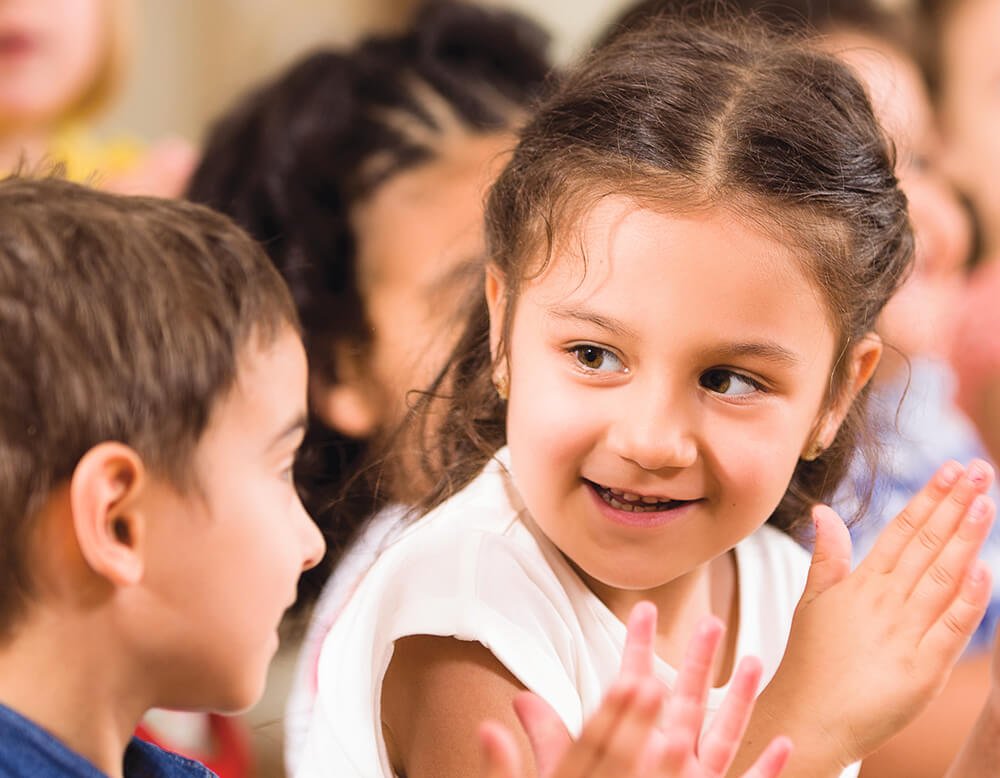Keeping Count
Graduate School of Education is Breaking New Ground - Using Music to Promote Math Skills in Preschoolers

It has long been known that there’s a connection between music learning and brain development, and that very young children exposed to music set up novel structures in the brain. Now the Touro College Graduate School of Education (GSE) is spearheading a new curriculum that will lead to improved outcomes in music, mathematics and social-emotional learning in high-need urban and rural kindergarten students. Once the pilot programs and randomized controlled trials are completed in 35 rural classrooms in Austin, Texas and 35 urban classrooms in New York City, the curriculum will be fully available and downloadable online and easily utilized by teachers with little or no musical background.
$1.4 Million Grant
As a result of the work in music and mathematics learning of Dr. Susan Courey, Department Chair Early Childhood Education/Special Education at the Touro Graduate School of Education, GSE was recently awarded a $1.4 million grant from the U.S. Office of Elementary and Secondary Education, a division of the United States Department of Education.
“Learning musical rhythm notation doesn’t require understanding language. It is its own language. If a child has a language challenge, it doesn’t matter,” explains Courey. The inspiration for this project began almost 20 years ago, when Courey was a third-grade teacher and saw firsthand how music instruction helped young children with math skills. “Music is fractions of sound. The concept of music, where a musician needs to play notes that last for various counts, really is another form of fractions.”
This approach was first tested by Courey more than a decade ago in classrooms where students were both English language learners and often children from underserved areas. After 12 lessons, during which children learned about musical notes that communicate the fractions of sounds that make up rhythms and then clapped and counted these out from a simplified musical score, the children with the least understanding of fractions, and often English language learners, seemed to have learned the most.
Pilot Program
Having received a 2018-2019 Touro College Presidential Research Development Grant to study this area further, Susan was able to continue examining the effects of music learning and math on cognitively, linguistically and culturally diverse pre-kindergarten and kindergarten students. More successful outcomes, as well as support from her partner organization, Daniel’s Music Foundation, prompted Dr. Courey to refine the curriculum and apply for an Education Innovation and Research (EIR) Program grant with the United States Department of Education. In the fall of 2019, GSE was chosen as one of 43 recipients across the country to test, implement and refine the curriculum for the Young Academic Music and Computational Thinking (YAM) project. GSE is coordinating the creation and implementation of the curriculum in Austin, Texas and New York City. Approximately 12,000 kindergarten students will participate in the study and data will be collected over a two-year period.
Teaming Up with Daniel’s Music Foundation
The first phase of this program began in February 2020, when Touro Graduate School of Education joined forces with New York City’s Daniel’s Music Foundation (DMF), a non-profit organization founded to empower individuals with developmental and physical disabilities through music. During the four-class pilot program, kindergarten students with developmental issues learned notes and rhythms. Child-friendly characters were developed for each note including, “Holy Moly,” for a whole note, “Dotty Diva” for a dotted half note, “Herby Half Note” for a half note, Quincy Quarter Note, and so on.
“We’re taking counting out musical rhythms to a conscious level and in doing so, children will develop the ability to understand more abstract concepts of early numeracy and apply them to areas beyond music,” explains Courey.

